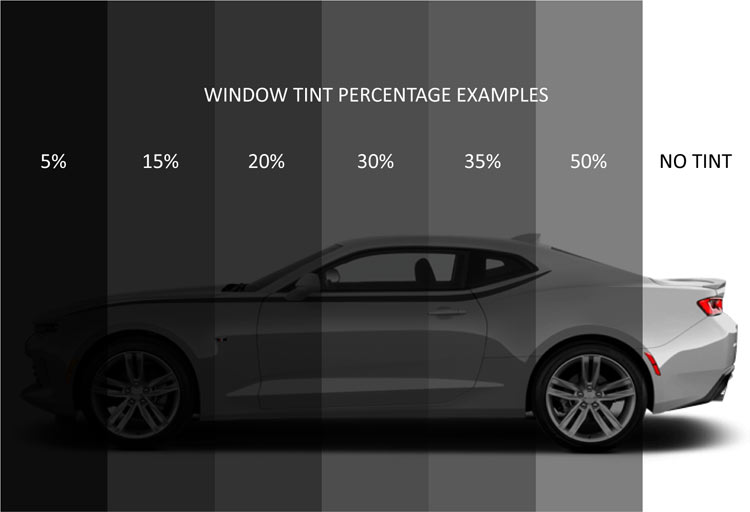Top Reasons to Select Specialist Vehicle Window Tinting Providers
Top Reasons to Select Specialist Vehicle Window Tinting Providers
Blog Article
Window Tinting Laws and Standards: What You Required to Know Prior To Tinting Your Car
Prior to proceeding with window tinting for your vehicle, it is crucial to acquaint on your own with the varied laws and guidelines that regulate this method throughout different states. These laws determine the permissible levels of tint darkness, commonly determined by visible light transmission (VLT) portions, and consist of certain stipulations for front windscreens intended at guaranteeing road safety.
Summary of Window Tinting Laws
Home window tinting laws are often based on variation throughout different jurisdictions, showing neighborhood regulations and security considerations. These regulations determine the allowable levels of color darkness and reflectiveness on lorry home windows, ensuring that drivers maintain appropriate exposure while additionally shielding against damaging UV rays and warm.
The majority of regulations identify home window tinting based upon the Visible Light Transmission (VLT) portion, which indicates the quantity of light that can travel through the home window. Usually, lower VLT portions signify darker colors. Regulations usually distinguish in between the front, side, and back home windows, with stricter constraints put on the front windscreen to enhance safety and security for both the motorist and other roadway users.
Conformity with home window tinting laws is essential, as offenses can result in fines, obligatory removal of the color, and potential rises in insurance premiums. It is important for automobile proprietors to acquaint themselves with local legislations prior to continuing with home window tinting installations.
State-by-State Tint Laws
Recognizing the particular window tinting guidelines in each state is essential for lorry proprietors looking for to abide by the legislation. Each state in the U.S. has established its very own collection of rules governing home window tinting, which can differ significantly. These regulations frequently determine the permitted degrees of color darkness, the kinds of windows that can be tinted, and any type of medical exceptions that may use.
As an example, states like California have rigid limitations on color darkness for front windows, while others, such as New Mexico, may allow darker tints. In addition, specific states mandate specific exposure percents for various windows, including the windshield, front side windows, and rear windows. It is critical for automobile owners to acquaint themselves with their state's regulations to stay clear of prospective fines or charges.
Furthermore, some states may require a qualification sticker label to be positioned on tinted home windows, suggesting compliance with state legislations. Failing to adhere to these guidelines not only risks legal effects yet can likewise affect safety and visibility while driving. Vehicle proprietors should perform detailed research study or speak with neighborhood authorities to guarantee complete understanding and compliance with state-by-state color laws.
Allowed Tint Degrees and Kinds
Numerous vehicle proprietors might be stunned to find out that enabled tint degrees and types differ widely across various states. Each state has actually established its very own guidelines pertaining to the acceptable darkness and reflectivity of window color, commonly determined by Visible Light Transmission (VLT) percents. VLT describes the quantity of light that can go through the colored windows; hence, a reduced percentage indicates a darker tint.

Additionally, the types of color products permitted can differ, with some states restricting metal or mirror-like finishes. It is vital for automobile proprietors to familiarize themselves with their state's certain regulations to make sure conformity. Non-compliance can result in fines, obligatory removal of the tint, or various other legal repercussions, making it critical to understand these regulations prior to continuing with setup.
Medical Exemptions for Tinting
While not all states offer allowances for clinical exemptions pertaining to home window tinting, those that do identify the requirement for specific people to boost exposure and convenience as a result of clinical problems. Different medical conditions, such as lupus, skin cancer, and particular eye problems, can make people especially conscious sunlight. These individuals may need darker colors to shield themselves from damaging UV rays and glare.

It is important to note that despite a medical exemption, there may still be restrictions on the level of tint enabled. Compliance with state legislations guarantees that individuals are both safeguarded and within lawful restrictions. Those taking into consideration medical exemptions must call their local Department of Electric motor Cars or comparable authority to recognize the demands and treatments essential to request an exception efficiently.
Charges for Non-Compliance
Stopping working to abide by home window tinting legislations can bring about considerable charges, which differ by state. Law enforcement companies are equipped to release citations for vehicles that do not comply with the specified tinting regulations. These charges commonly include penalties, which can range from modest total up to numerous hundred bucks, relying on the intensity of the infraction and the state in inquiry.
In some territories, duplicated offenses might cause intensifying fines or additional fines, such as compulsory court appearances. Additionally, non-compliance may demand the elimination of illegal tinting, typically at the proprietor's expense. In severe situations, regular culprits might face suspension of their car enrollment up until compliance is attained.
Furthermore, insurance coverage implications might occur from obtaining multiple citations for home window color violations. Insurance companies you can try this out might watch such infractions as an indicator of riskier habits, possibly leading to enhanced costs or trouble in coverage.
To avoid these penalties, it is crucial for automobile proprietors to familiarize themselves with their neighborhood window tinting legislations and make certain that their vehicle complies (Window Tinting). This proactive technique not just avoids lawful implications however additionally promotes road security
Conclusion

Most policies classify window tinting based on the Visible Light Transmission (VLT) percent, which shows visit our website the amount of light that can pass through the window. Conformity with home window tinting regulations is important, as offenses can result in fines, required removal of the tint, and prospective rises in insurance costs.Recognizing the details window tinting guidelines in each state is crucial for car owners seeking to comply with the legislation. These policies commonly determine the permitted levels of tint darkness, the types of home windows that can be tinted, and any kind of clinical exemptions that may use.
For circumstances, states like The golden state have rigorous restrictions on color darkness for front home windows, while others, such as New Mexico, might permit darker tints.
Report this page